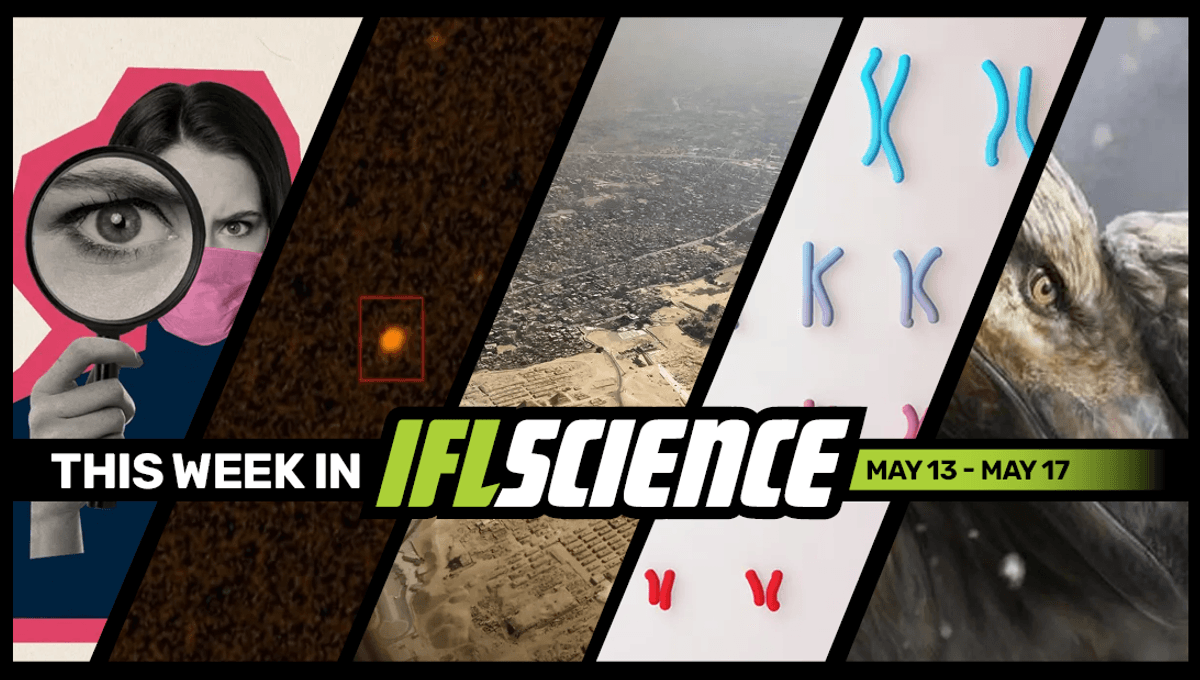
This week, two new searches have identified 60 potential “alien megastructures” in our galaxy, something strange is happening to the Y chromosome, and warm-blooded dinosaurs may have evolved 180 million years ago. Finally, we meet the explorers who travelled to the most remote place on Earth in an IFLScience exclusive interview.
Subscribe to the IFLScience newsletter for all the biggest science news delivered straight to your inbox every Wednesday and Saturday.
What’s Going On With The New COVID FLiRT Variants?
Recently, we reported on the new family of COVID-19 variants that looked set to start overtaking the pack to become the most widespread. Now, surveillance data from both the US and UK show that the FLiRT variants, as they’re called, seem to be living up to these predictions, as UK COVID cases tick up by 21 percent in just a week. Read the full story here
Two New Searches Find 60 Potential “Alien Megastructures” In Our Galaxy
In 2018, the world got very excited about an unusual star. KIC 8462852, better known as Boyajian’s star or just the “alien megastructure” star, it was found to be dimming in an unusual way. As a planet orbits a star, it blocks out a certain amount of light and causes it to dim from our perspective on Earth. When we looked at Boyajian’s star, however, we found that it was dipping by variable amounts. Read the full story here
This Lost River Could Explain How The Pyramids Were Built
Why are dozens of Egypt’s ancient pyramids found in an unremarkable strip of barren desert, far from the shores of the modern River Nile? Perhaps, new research suggests, it’s because they were built along a branch of the river system that’s since been lost to time. Read the full story here
What’s Happening With The Y Chromosome?
Most humans have 23 pairs of chromosomes. One of these pairs is the sex chromosomes. Unless someone has a chromosome abnormality, it usually consists of either two X chromosomes or an X and a Y. But now, the human Y chromosome isn’t what it used to be – long gone are the days when it used to be the same size as its pal, X. It’s now much smaller, but is it set to disappear entirely? And if so, what would happen? Read the full story here
The First Warm-Blooded Dinosaurs Probably Evolved 180 Million Years Ago
Dinosaurs were originally thought to have been cold-blooded creatures, but now, there is broad agreement that some dinosaurs were warm-blooded or endothermic, to use the more scientific term. The ability to regulate body temperature internally, rather than relying on the Sun, may have first appeared among dinosaurs around 180 million years ago, coinciding with an extreme climatic period. Read the full story here
TWIS is published weekly on our Linkedin page, join us there for even more content.
Feature of the week:
Point Nemo: What It’s Like Sailing To The Most Remote Place On Earth
A father and son explorer team have successfully reached the most remote place on Earth after embarking on a harrowing journey to Point Nemo, a place where – most of the time – the nearest humans are whizzing overhead on the International Space Station (ISS). That all changed in 2024 when Chris and Mika Brown journeyed to the “Oceanic Pole of Inaccessibility”, possibly becoming the first humans to ever pass through the specific coordinates. Read the full story here
More content:
CURIOUS Live, our free virtual event, is back for May 2024. Register now and join us as we explore nuclear war, the connection between mental and physical health, insect detectives, and the search for life elsewhere in the universe. Grab your free ticket now!
Have you seen our e-magazine, CURIOUS? Issue 22 May 2024 is out now. Check it out for exclusive interviews, book excerpts, long reads, and more.
PLUS, the entire season 3 of IFLScience’s The Big Questions Podcast is available now.
Source Link: What’s Going On With The New COVID FLiRT Variants? This Lost River Could Explain How The Pyramids Were Built, And Much More This Week